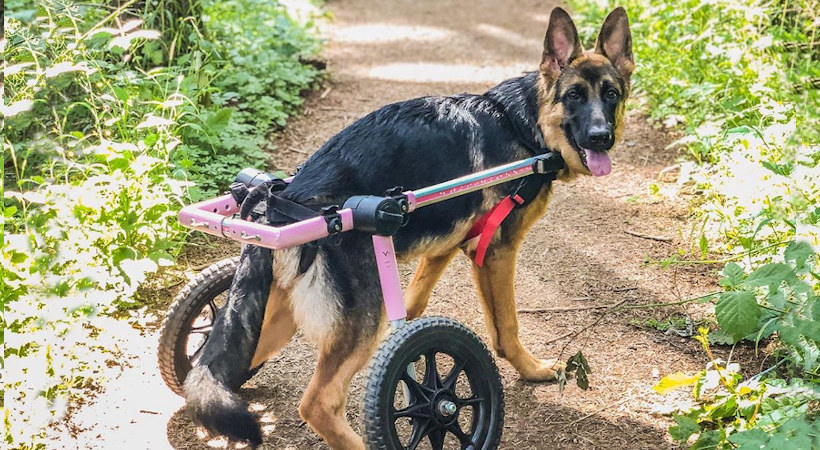Is your canine dragging its again paws? Or beginning to wobble? Right here’s a fast primer on understanding Degenerative Myelopathy (DM) and what you may do to help your canine.
Fast Info About DM
Which Breeds Get It?
Though DM is most typical amongst German Shepherds, Degenerative Myelopathy can happen in many various canine breeds. Berneses Mountain Canine, Boxer, Retrievers, Husky, and Corgi are only a few.
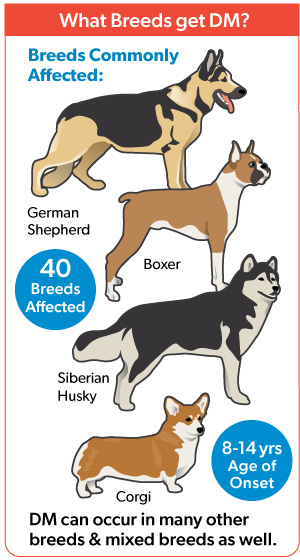
Degenerative Myelopathy is a progressive spinal illness affecting older canines, normally between the ages of 4 to 14. Leading to:
- Lack of coordination and swaying again legs
- Canine falls over if gently nudged from the facet
- Paw knuckling and dragging
- Mobility loss with progressive worsening over time
Because the situation progresses and the spinal twine deteriorates, canines will expertise eventual paralysis.
Degenerative Myelopathy is a hereditary illness that’s handed down by dangerous breeding. DM is most prevalent in German Shepherds but in addition happens in Boxers, Siberian Husky, and Corgis. Degenerative myelopathy is the main explanation for hind leg weak point in German Shepherds.
DNA Testing for Degenerative Myelopathy
DNA testing is out there to find out in case your canine is liable to growing or carrying the genetic mutation that causes Degenerative Myelopathy. A degenerative myelopathy take a look at determines whether or not your canine is obvious of the gene if they’re a provider for the gene mutation, and if they’re thought-about excessive threat for growing the situation once they’re older. Breeds in danger for the situation must be examined previous to breeding to forestall DM from spreading.
Can Younger Canines Get Degenerative Myelopathy?
Youthful canines will be affected by degenerative myelopathy, however it’s uncommon. DM is normally identified in older canines between the ages of 8 – 14 years previous. The common age of DM onset is round age 9.
What Are the Signs of Degenerative Myelopathy?
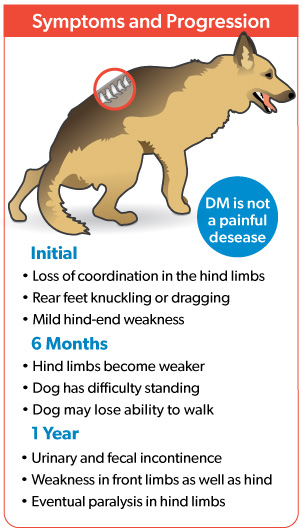
Signs of Degenerative Myelopathy will change and worsen over time. As a progressive situation, you’ll be able to anticipate a canine with DM to expertise vital adjustments in mobility as time goes on. The important thing to understanding DM, is figuring out the totally different phases of mobility loss your canine will expertise.
Early indicators of DM embody:
- Lack of coordination within the hind limbs
- Rear ft knuckling and dragging
- Delicate hind-end weak point
Signs at 6 Months:
- Hind limbs grow to be weaker
- Canine has issue standing
- Canine could lose skill to stroll
DM Signs at 1 Yr:
- Urinary and fecal incontinence
- Weak spot in entrance limbs in addition to rear
- Eventual paralysis in hind limbs
Understanding the phases and development of degenerative myelopathy is essential to figuring out the long run mobility wants of your canine. DM doesn’t comply with a strict timeline, and the velocity at which it progresses varies from canine to canine. Early indicators of degenerative myelopathy are straightforward to overlook, however the indicators of mobility change quickly grow to be obvious.
Is Canine Degenerative Myelopathy Painful?
Canines with degenerative myelopathy usually are not in any ache. Though DM itself isn’t a painful situation, as canines develop weaker, they do place further stress on different elements of their physique, which may trigger ache. Because the hind legs weaken, a canine could expertise ache of their shoulders, elbows, and entrance legs as they bear extra weight on their entrance legs to compensate. DM canines which can be exhibiting indicators of ache could also be experiencing ache from one other well being situation, equivalent to arthritis.
How Do You Sluggish the Development of Degenerative Myelopathy?
Degenerative Myelopathy progresses at a special tempo for each canine. Some canines will expertise a speedy decline; others will slowly lose management of their legs over the course of months. Though we’ve got little management over how briskly DM progresses, current research have proven that train can gradual the unfold of Degenerative Myelopathy. For one of the best outcomes, rehab remedy is greatest to present your canine common, structured train that’s tailored for his or her particular person wants.
What Can I Do If My Canine Has DM?
There is no such thing as a remedy for canine degenerative myelopathy. Though there is no such thing as a remedy for DM, there are lots of alternative ways to assist and help your canine as its situation progresses. Bodily train is the important thing part to extending your canine’s life and slowing the development of degenerative myelopathy. Listed below are a number of methods you’ll be able to enhance your canine’s high quality of life:
Assistive Gear to Assist DM Canines
Your canine’s mobility wants will change all through the numerous phases of DM. Listed below are a number of assistive gadgets to assist maintain your canine shifting.
- Slings and harnesses for a lifting help
- Pet boots to guard dragging paws
- Make the most of coaching instruments to assist with paw placement and gait coaching
- Canine wheelchair
Holistic Care and Physiotherapy for Degenerative Myelopathy
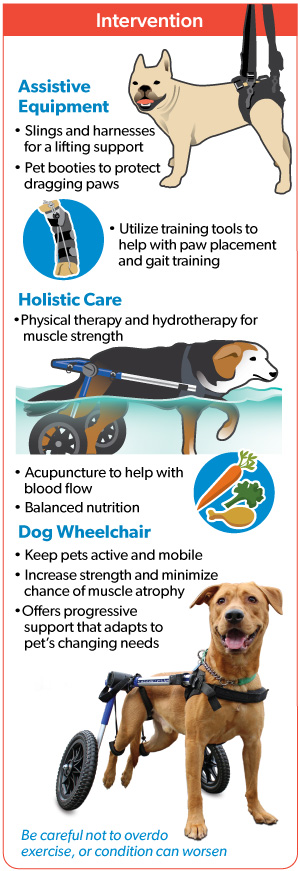
Work along with your Vet and rehab specialist to provide you with a remedy plan that features a multi-modal plan. Bodily remedy is vital for canines with degenerative myelopathy. The advantages of bodily remedy embody improved mobility, slowing down DM development, and improved general energy.
- Bodily remedy and hydrotherapy for elevated muscle energy
- Therapeutic massage and acupuncture to assist with blood stream
- Laser remedy to stimulate the nervous system
- Balanced vitamin
Mix pure therapies for degenerative myelopathy with rehabilitative train to advertise general bodily well being. Common rehab classes with a Licensed Canine Rehabilitation Specialist assist to decelerate DM development. It’s essential to comply with your CCRP’s train pointers. Over-exercising a canine with degenerative myelopathy can result in muscle fatigue and exhaustion.
Canine Wheelchairs for Degenerative Myelopathy
Finally, each canine identified with Degenerative Myelopathy will want the help of a canine wheelchair. Paralysis is the hallmark of DM, and your canine would require a mobility cart to remain energetic. Listed below are a number of of the methods a canine wheelchair can help your canine:
- Hold pets energetic and cellular
- Enhance energy and decrease the possibility of muscle atrophy
- Affords progressive help that adapts to a pet’s altering wants
- Improve degenerative myelopathy rehabilitation classes with wheelchair help
- Support canines with DM with stability struggles
- Canine wheelchairs promote psychological wellbeing and decrease threat of a canine changing into depressed from inactivity
A canine with Degenerative Myelopathy will lose energy of their legs, normally beginning within the hind finish first. A wheelchair offers a DM canine with the help it must stroll and train. Common train may also help to decelerate the illness development, so serving to your canine to remain energetic can actually maintain them more healthy.
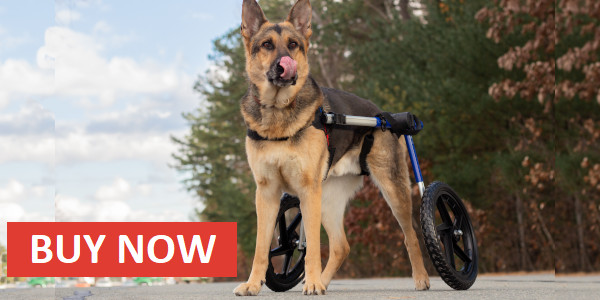
Associated Articles:
Did we reply all of your questions on “Degenerative Myelopathy”?


